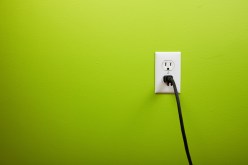What No One Tells You About Living with Sleep Apnea and Using CPAP
Sleep apnea is a common yet often misunderstood sleep disorder that affects millions worldwide. For those diagnosed, Continuous Positive Airway Pressure (CPAP) therapy becomes a lifeline. But living with sleep apnea and using CPAP devices comes with challenges and realities that many are not prepared for. This article unveils the lesser-known truths about managing this condition and how to improve your quality of life while using CPAP.
Understanding Sleep Apnea: More Than Just Snoring
Sleep apnea is characterized by repeated interruptions in breathing during sleep, often causing loud snoring, gasping, or choking sounds. However, it’s more than just a nuisance; untreated sleep apnea can lead to serious health issues including high blood pressure, heart disease, stroke, diabetes, and daytime fatigue that increases accident risk. Recognizing the severity of this condition is crucial for seeking appropriate treatment.
The Role of CPAP Therapy: A Game Changer With Its Own Set of Challenges
CPAP machines are considered the gold standard treatment for obstructive sleep apnea. They work by delivering a steady stream of air through a mask to keep airways open during sleep. While incredibly effective in reducing symptoms and improving overall health outcomes, adapting to CPAP therapy can be difficult for many users due to discomfort from masks, noise from machines, dry mouth or nasal congestion.
Common Struggles with CPAP Usage That Are Rarely Discussed
Many patients experience initial struggles such as feeling claustrophobic wearing the mask or dealing with skin irritation where the mask contacts the face. Additionally, some users find it hard to maintain consistent use every night due to inconvenience or embarrassment. These obstacles often lead to non-compliance which diminishes treatment effectiveness but can be overcome with proper support and equipment adjustments.
Tips for Improving Your Experience With Sleep Apnea and CPAP
To enhance comfort while using CPAP devices, consider trying different mask styles like nasal pillows or full-face masks until you find the right fit. Humidifiers attached to CPAP machines can relieve dryness in nasal passages and throat. Regular cleaning of equipment prevents infections and prolongs device life. Most importantly, working closely with your healthcare provider ensures tailored adjustments unique to your needs.
Beyond Therapy: Lifestyle Changes That Complement Sleep Apnea Treatment
In addition to utilizing CPAP therapy consistently, lifestyle modifications play an essential role in managing sleep apnea effectively. Weight loss through diet and exercise can dramatically reduce symptoms since excess weight contributes to airway obstruction during sleep. Avoiding alcohol and sedatives before bedtime also helps keep muscles from relaxing excessively around the airway.
Living with sleep apnea requires more than just relying on CPAP machines; it involves understanding the condition’s impact on health and actively participating in treatment strategies that promote better rest every night. By acknowledging these lesser-known aspects—from initial adaptation difficulties to complementary lifestyle changes—patients can transform their experience from one of struggle into empowerment toward healthier sleeping habits.
This text was generated using a large language model, and select text has been reviewed and moderated for purposes such as readability.





